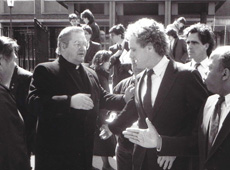FR. MCMANUS SHOCKED AND PUZZLED BY BOOK
Posted By: May 07, 2021
FR. MC MANUS SHOCKED AND PUZZLED BY OMISSION OF HIS LATE BROTHER PATRICK FROM NEW BOOK, Fermanagh: From Plantation to Peace Process by Margaret Urwin. Eastwood Books. Dublin. 2020.
“I find it incomprehensible that the only Fermanagh IRA leader (and O.C., Commanding Officer for South Fermanagh and member of the Army Council ) killed in the 1956-1962 Border Campaign is not mentioned in Urwin’s book—even though she has a chapter on Operation Harvest, which mentions many names. In a promotion piece on her book in the Irish Times, ‘A history of Fermanagh, from the Plantation to the present,’ (April 28), the author said: ‘The core of the book is the detailed analysis of all conflict-related deaths.’
Denzil McDaniel writes in the introduction: ‘The analysis of the Troubles death in Fermanagh is meticulously researched from impeccable sources and detailed factually. ’Yet, the best-known Fermanagh IRA leader of that time is expurgated or censored. How could a ‘researcher’ on Fermanagh conflict-related deaths possibly miss knowing about my brother Patrick: the Kinawlly GAA stadium is proudly named after him; there is a monument on the site where he was killed by the premature explosion across The Border in County Cavan; there is a monument/Headstone on his grave in Swanlinbar, County Cavan, which is an integral part of Kinawley parish; there is also a monument at the end of Cloniff lane, County Fermanagh where Patrick was born. Additionally, every (other) book on The Border Campaign mentions Patrick; and the Sinn Fein Cumann in S. Fermanagh is named in his honor.
Patrick lived all his life in Fermanagh until he went on the run in December 1956 to his death on July 15, 1958…. And, to repeat, he was the O.C. for South Fermanagh. I hope there won’t now be any attempt to excuse this flagrant omission of a greatly admired Irish patriot by offensive casuistry, like, ‘Patrick was killed a few miles across the Border in County Cavan, so, therefore, he was not a Fermanagh death.’ ”










